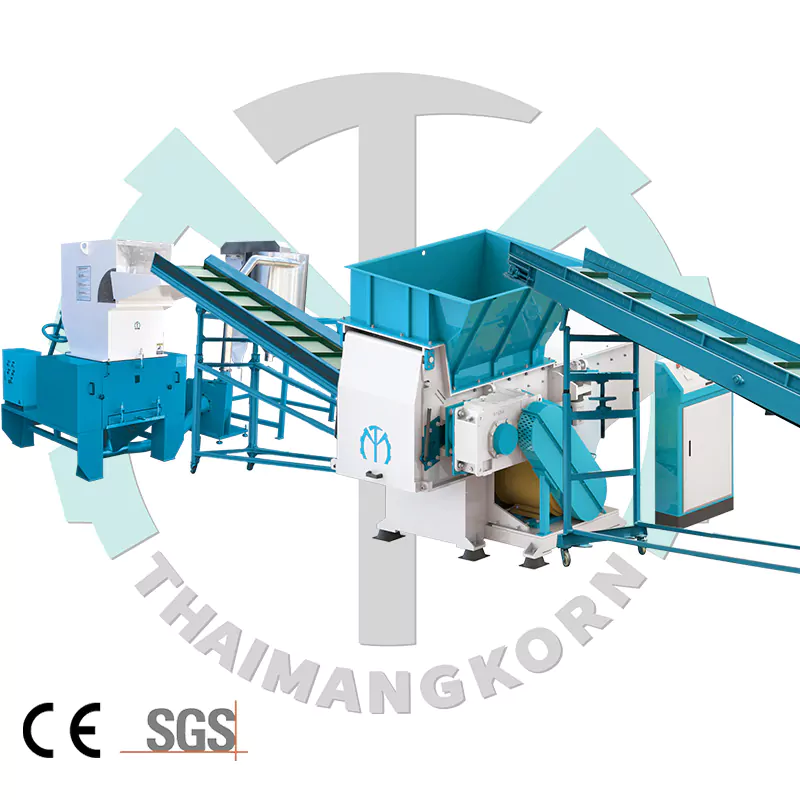Introduction
The PVC shredder machine is essential for recycling in the present world. PVC is among the most commonly used plastics, and the machines help break down large masses of PVC into small, manageable bits for recycling. It becomes an essential process for the lean effectiveness of the overall recycling mechanism.
A PVC shredder is used in many operations at manufacturing units, recycling units, and waste management organizations. These convert old used PVC materials into a new one and reduce the required fresh raw to mitigate environmental wastes.
In this blog post, we shall look more at how a PVC shredder machine works, the major components of this beneficial machine, its benefits, and its various applications. Such machines can help businesses make their core recycling activities even better by understanding it in quite a detailed way to keep the environment healthy.
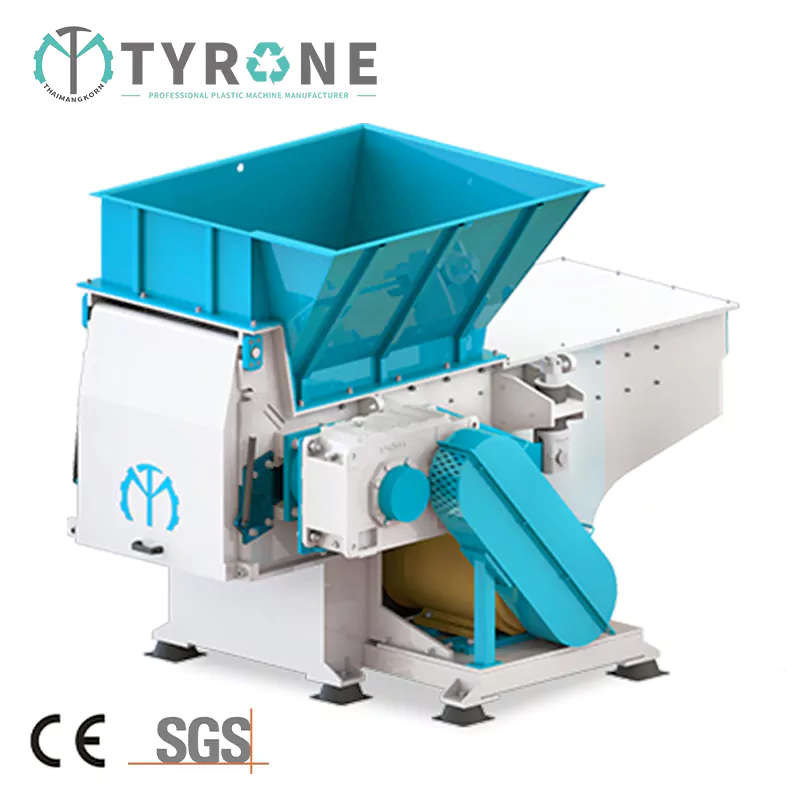
What is a PVC Shredder Machine?
A PVC shredder machine is an industrial machine that is explicitly designed to take care of the shredding of polyvinyl chloride (PVC) materials. Such shredders play a vital role in the recycling process by breaking bulky PVC items, including PVC pipes, profiles, and sheets, into smaller and easily manageable pieces that can be further quickly processed and recycled.
Definition and Purpose
By making the size manageable, PVC shredders make handling and recycling relatively easy. Recycling processes are easily facilitated when machines convert the bulky PVC bodies to minute bits, cutting new raw material needs and causing only conversions to waste products, therefore minimizing the environmental impact.
Importance in the Recycling Industry
PVC is among the most widely used plastics globally. Instead, it finds applicability, duplicated nowhere else in plumping pipes up to packaging. The vast amounts of PVC waste it generates show the great interest in highly effective recycling.
Using PVC shredders becomes invaluable in ensuring the rerouting of such material while maintaining sustainability at a high level and minimizing coloring pressure on landfills.
Types of PVC Shredders
There are many types of PVC shredders, including the design and configuration that meet the several applications of PVC. However, the basic types include:
Single-Shaft Shredders: Lightweight to medium-duty shredding operations require machines that can provide precision and efficiency.
Double-Shaft Shredders: Optimized to handle higher material, rigid PVC inclusions for higher throughput and stricter durability.
Horizontal Shredders: For continuous, high-capacity operations, this type of shredder is ideal for large-scale recycling facilities.
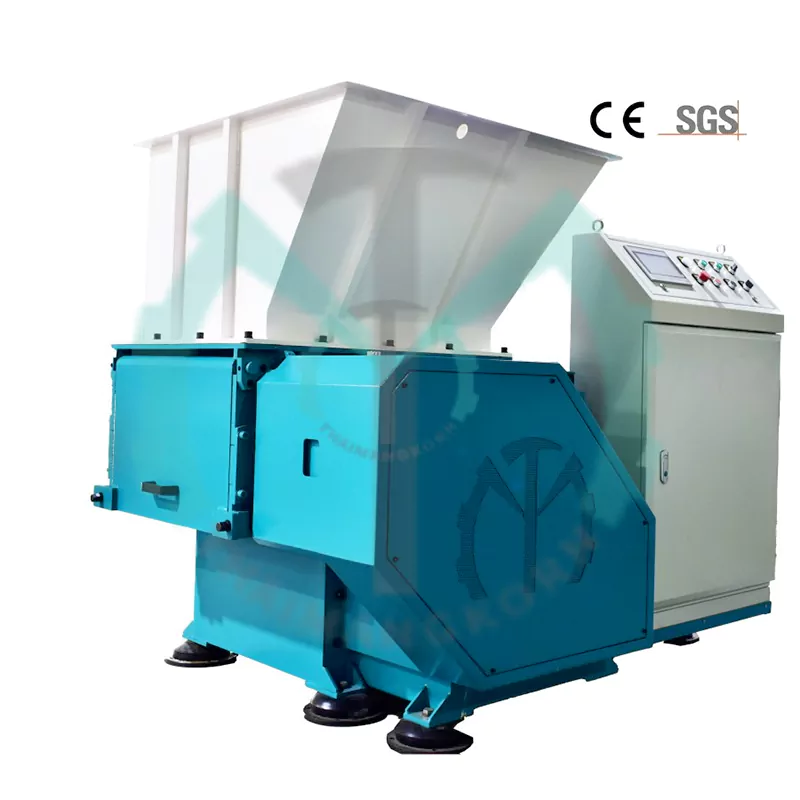
One can easily find appropriate equipment by having information on the basic definition and importance of PVC shredder machines and equipment and the different types available for increased recycling efforts, creating a more sustainable environment.
How Does a PVC Shredder Machine Work?
PVC shredder shreds more significant pieces of polyvinyl chloride into small handleable bits to be recycled earlier. Understanding how a PVC shredder functions can help a firm and industry orient their recycling.
Mechanics of Operation
Feeding Process: The PVC material is first loaded into this machine hopper. The hopper takes in materials that it feeds into the shredding chambers at a controlled pace and constant flow.
Shredding Process: Inside the chamber, a hydraulic ram pushes the material towards a rotating rotor. The rotor is equipped with sharp, robust knives that cut the PVC into smaller pieces. This cutting action is performed by the interaction between the moving blades on the rotor and the stationary blades attached to the chamber walls.
Screening Process: The passed material is run through a controlling-size outflow sieve after being shredded. The screen is essential when ensuring the uniform size of all shredded bits, which is an essential parameter for the next steps for recycling. The material that is still too oversized is re-fed into the system’s rotor to obtain sizes that are small enough.
Technical Details
PVC shredders will generally work at low speeds and high torque. This phenomenon is effective for several reasons:
Efficiency: The low-speed operation is also a success in having a less power-consuming aspect while still providing enough power to cut through the rigid PVC material.
Noise Reduction: Such a design with high torques at low revolutions also helps keep the noise generated at minimum levels, making it suitable for operating indoors.
Durability: Running at the said low speeds dramatically reduces the strain put on the machine, making it wear very minimally, therefore providing extended operational life and reducing the machine’s maintenance.
From these operational mechanics, businesses are also urged to use PVC shredders more effectively in matters related to recycling to make the environment more sustainable.
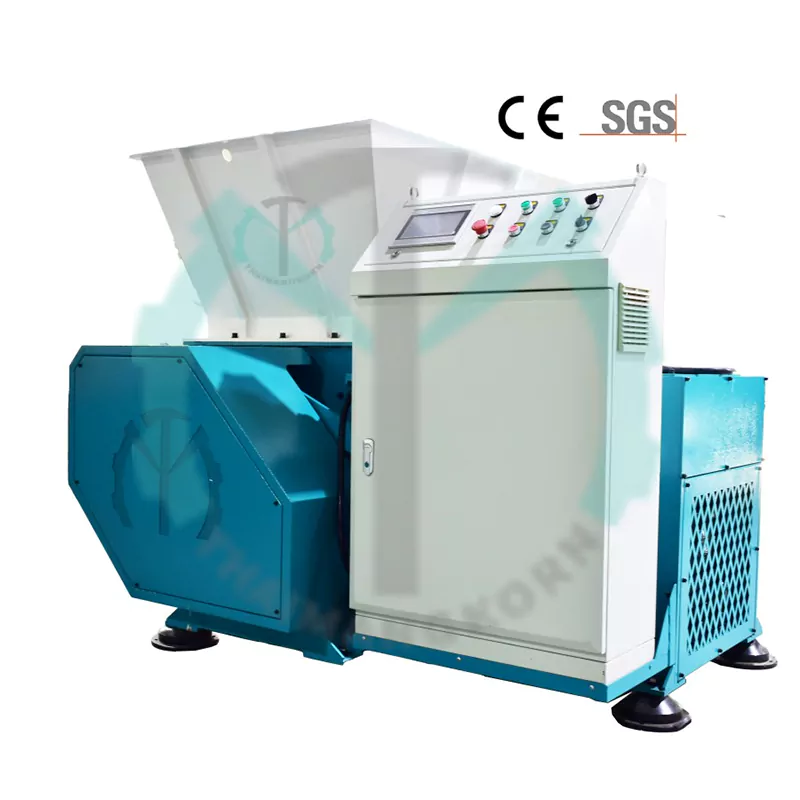
Key Components of a PVC Shredder Machine
Understanding and knowledge of each part’s role instead clear a way of understanding how the machine works to be effective and efficient. Each of them plays a specific role in the shredding process of any PVC materials, making them much smaller—into pieces manageable and suitable for recycling purposes.
Hopper
The hopper is the entry to the PVC shredder machine into which the materials are loaded. It directs the safety, efficiency, and ease of the PVC pieces into the shredding chamber. That’s because it provides controlled feed, avoiding jamming and ensuring a continuous flow of material into the machine.
Hydraulic Ram
The pivotal part that pushes the PVC material towards the rotor is the hydraulic ram. It is a robust mechanism that ensures that big and complex PVC items are fed into the shredding blades without cessation. Controlled pressure levels from the ram ensure smooth operations and deter machine overloading.
Rotor and Knives
Pre-cutting material into orderly and smaller-sized pieces for a wet granulator to cut later can be achieved easily. Total rotating cutters have several rotatable and replaceable cutting knives on their circumference. The rotor is the heart of the shredding action.
It contains sharp, sturdy knives that cut the PVC material into small pieces. The rotating blades on the rotor cut the material with the stationary blades in the shredding chamber and provide a shearing action. The design and the quality of the knives determine the proper shredding and long life of the machine.
Screen
After fragmentation of the PVC material, the materials pass through a screen, ensuring all the fragmented pieces released are of the same size. The screen may be of variable sizes, depending on the outcome size meant for preparation for recycling treatments. The rotor will send oversized pieces back for recycling and thus doesn’t alter the uniformity in the final product.
Motor
The motor is needed to power the rotor and hydraulic system of the shredder. It should be robust and reliable, able to provide all necessary torque and speed for efficient shredding. The machine’s efficiency, energy consumption, and productivity are directly linked with the motor performance.
Control System
Modern PVC shredders also have advanced control systems that monitor and control the machine’s operations. It is an excellent way to monitor and control the shredding process to improve performance and safety. Other highlights in top-of-the-line shredders include load gyroscopic protection, variable periodic speeds, and remote monitoring that cushions the machine with greater efficacy and safety to the user.
One is able to understand how PVC shredders work and the role of every single element in the functioning process by knowing these main elements. This information will be beneficial while opting for the right equipment or correctly maintaining it for perfect running conditions and long service life.

Common Applications of PVC Shredder Machines
Besides that, PVC waste shredder machines are versatile. All the different industries dealing with plastic waste use these machines and require high-performance rates. Familiarity with the general applications for which the machines are used will benefit companies when installing the shredders into already running schemes.
Manufacturing Plants
For this reason, processors of PVC pipes, profiles, and sheets in manufacturing plants use PVC shredders. Most facilities that manufacture these products produce large amounts of PVC-made-related wastes during their production runs; all wastes produced can be successfully reduced using shredders and reused.
The PVC can be reprocessed in the extruder by decreasing the rate of the new raw material in use and producing fewer wastes.
Recycling Facilities
Recycling plants rely entirely on PVC shredders to handle post-consumer PVC products. Nationwide, these centers collect many such products, bottles, containers, and packaging, and an in-house shredder breaks them into smaller pieces.
Now shredded, the PVC is cleaned and processed into a raw material that can be used for new products; in so doing, plastic waste could be kept out of landfills, and the circle closed as it returns to the market.
Construction Industry
A PVC shredder will also be used in the construction industry. The ‘waste’ from the construction industry is one of the largest sources of PVC and is derived from using the material in pipes and flooring, for instance, during construction.
Such waste is volume reduced by applying shredders to allow material transportation and subsequent utilization in recycling plants. Also, employing a shredder in the on-site management of construction waste reduces the disposal cost and increases the sustainable building rating, besides achieving higher points.
Waste Management
Waste management companies efficiently handle the immensity of plastic waste by employing PVC shredders. PVC processing machines are used to permit processing into smaller sizes for further recycling processes or disposal in landfill scenarios.
It is thus a vital volume reduction technology that waste management companies use for the disposal of semi-solid municipal wastes, as volume minimization, particularly in these arenas, can have dramatic cost and environmental savings.
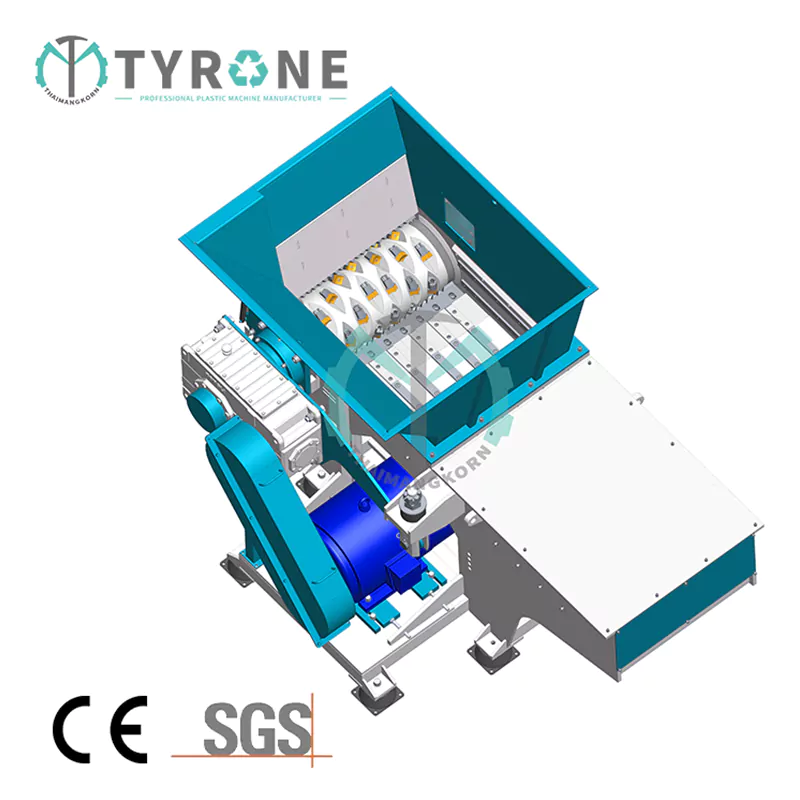
Conclusion
PVC shredder machines are necessary for the modern-day drive toward managing and recycling waste. These shredders help convert the voluminous mass of PVC into a reusable resource, all with minimal environmental effects and being accounted for as a means of sustainability.
Knowing all the intricacies, details, advantages, and applications helps the business optimize the process of recycling, reduce cost, and assist in going green programs. A PVC shredder is crucial not only in enhancing operation efficiency but also in helping nature gain more verdant dosages.

